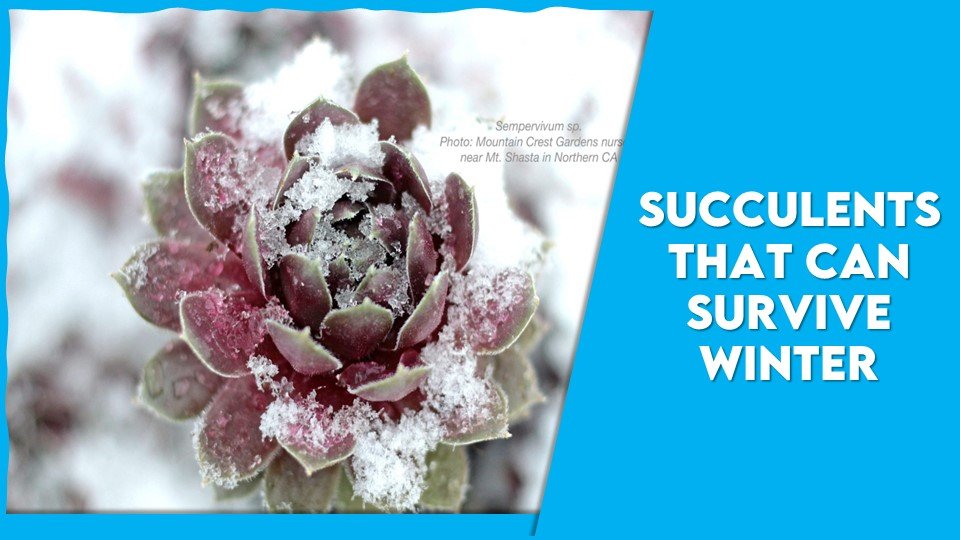20 Best Succulents That Can Survive Winter
The succulents are water-retaining rings, and fleshy plants that only thrive best in hot summer, under ample sunlight, yet there are few succulents that can survive winters.
Being known for fitting in small pots and delicate beauty, succulents are always in high demand for home decor, landscaping and rock gardening purposes. And most of the succulents restrict their biological activities in extreme cold temperatures, prolonging winter may also cause winter injury and rotting in succulents.
This article reflects the idea of growing hardy succulents in extreme winter and for the places that receive winter for most time of the year like Finland, Iceland, Norway, etc. Most of these belong to three genera of succulents and those are, Sedum, Opuntia and Sempervivum out of 60 families known.
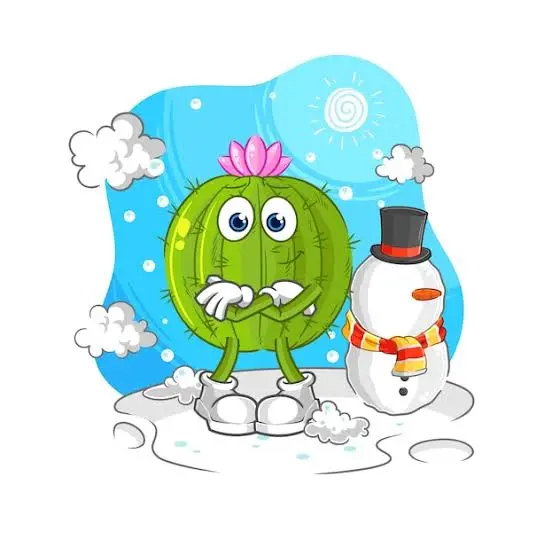
Also Read: How to Propagate Russian Sage
Succulents That Can Survive Winter
1. Agave
| Common Name | Sanctuary Plant, American Aloe |
| Scientific Name | Agave americana |
| Family | Asparagaceae |
| Temperature | 20-35°C |
| Hardiness Zone | 5-9 |
| Origin | Mexico and US |
There are more than three hundred species of Agave known. Agaves might not be the best choice in snow and extreme weather conditions but they can survive both in hot and cold seasons, moreover, these are available in different colours, shapes and sizes, though flowering is rare in this plant. It has thick leaves with a spine at the end of the leaf.
One must keep in mind that Agave is monocarpic, hence it will need to be re-planted every year through its offsets. Its roots are shallow, so one needs to be careful while watering this beauty. Some of the most common Agave known are:
- Artichoke agave (Agave parryi).
- Mountain agave (Agave montana).
- King of agaves (Agave nickelsiae).
- Whale’s tongue agave (Agave ovatifolia).
- Harvard agave (Agave havardiana).
- Queen Victoria Agave (Agave victoriae-reginae).
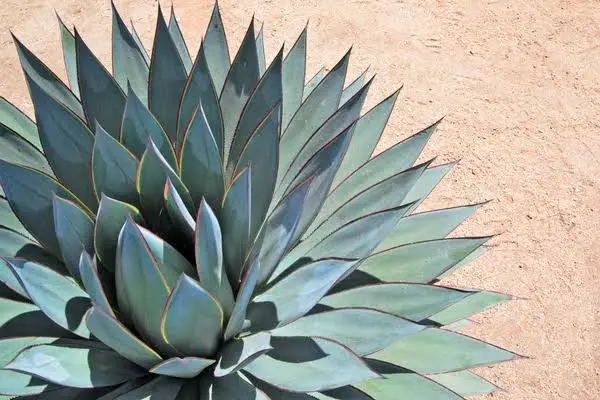
2. Prickly Pear
| Common Name | Paddle Cacti, Nopal Cactus |
| Scientific Name | Opuntia ficus-indica |
| Family | Cactaceae |
| Temperature | 18-25°C |
| Hardiness Zone | 4-9 |
| Origin | Native to America |
Prickly Pear, a flat-stemmed and spiny cactus, is grown for its pulpy sweet fruit and forages, It has many health benefits including its antioxidant properties and in reducing inflammatory reactions. But, the fruit thrives best in warmer conditions only. In addition to that, Prickly Pear is known to survive best in most hardy conditions around the world. Its propagation is so simple that it is considered invasive, where the predators were left behind after its introduction to foreign land.
The only pitfall in growing this succulent is that it must be grown outdoors, as it sizes up to 3-20 feet, Although, it can also be grown for safety purposes as spines are a part of its body. Being a Cactus, it is tolerant to salinity as well as to alkalinity.
Two common species of Prickly Pear are:
- Engelmann prickly pear.
- BeaverTa Cactus.
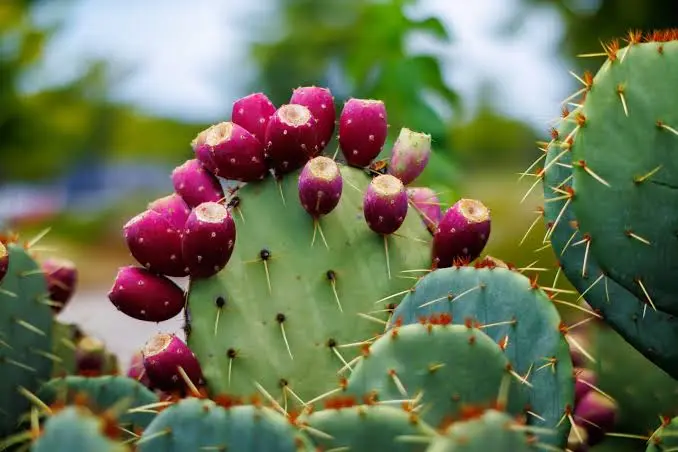
3. Orostachys
| Common Name | Dunce’s cap |
| Scientific Name | Orostachys |
| Family | Crassulaceae |
| Temperature | 15-33°C |
| Hardiness Zone | 6-10 |
| Origin | Japan |
Orostachys has a basal rosette structure with greyish-lavender fleshy leaves that point outwards like a spine. These spikes may bloom tiny yellow flowers in the third year or maybe the second. The plant spreads to a wide range and can be propagated year after year through its offsets. Its spike resembles a cone, and that is the reason why it is called Duncan’s cap.
Orostachys, as the name suggests ‘Oros’ meaning mountain, or ‘stachys’ which means a spike, suggests the very nature of this mountain succulent. They prefer dry soil with good sunlight(partial or full).
Here are some common species of Orostachys:
- Japanese dunce cap (Orostachys furusei)
- Dunce’s cap (Orostachys fimbriata)
- Rock pine (Orostachys japonica)
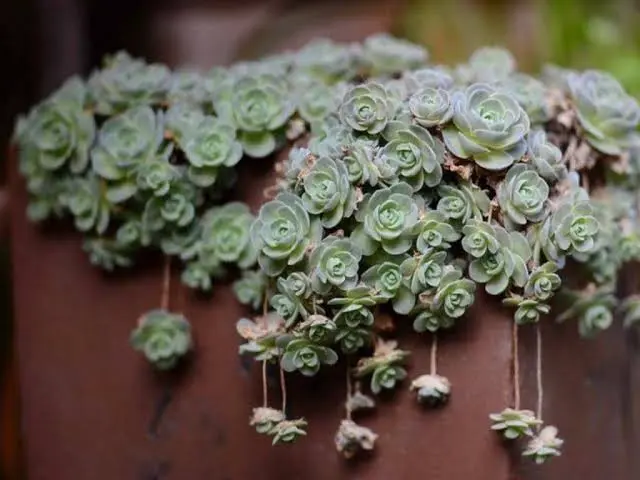
4. Ice Plant
| Common Name | Ice Plant |
| Scientific Name | Ruschia pulvinaris |
| Family | Aizoaceae |
| Temperature | 20-38°C |
| Hardiness Zone | 6-11 |
| Origin | South Africa |
Ice plant as a low-maintenance succulent, is largely used as a ground cover, or in rock gardens for its profuse pink, white flowering. Hence, It is categorised as Ultra-dwarf annual, and its leaves are edible too. The flowers of this succulent that can survive winter, open only in the presence of sunlight and close at dawn.
It might be a suitable choice to grow this plant indoors but it must not be grown in places that receive snow for a prolonged period. A rather silty soil is preferred for its growth, if grown in clayey soil then it must be incorporated with light soil materials for its proper growth and flowering.
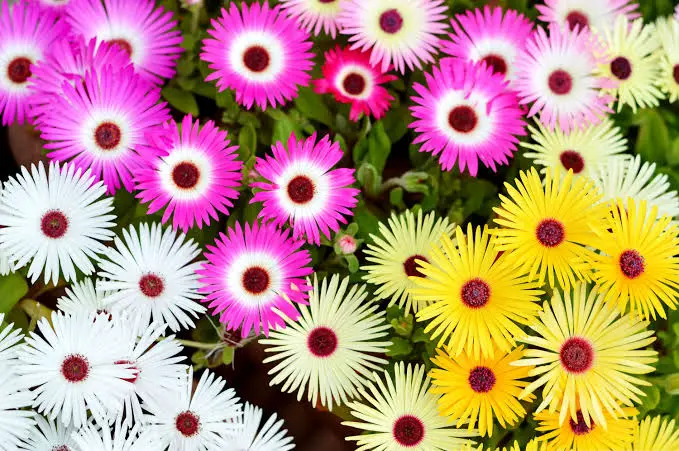
5. Sedum
| Common Name | Stonecrop, Hylotelephium, Live-for-ever, or Orpine |
| Scientific Name | Sedum sp. |
| Family | Crassulaceae |
| Temperature | 15-38 ℃ or even in -6°C |
| Hardiness Zone | 3-11 |
| Origin | Most species originated in China |
Sedum is a well-known winter-hardy succulent. The most fascinating characteristic of Sedum is that its colour changes as the changes occur in different seasons, making it suitable for pollinator gardens. It is usually used as a ground cover, but it could also be used for hanging basket purposes, after a year or if it may also produce white flowers.
Shallow and dry soil is best for growing Sedum as it has narrow roots. It prefers full sunlight but it can also survive partial shade Some of the known Sedum species include:
- Dragon’s blood (Sedum spurium)
- Cape Blanco sedum (Sedum spathulifolium)
- Goldmoss stonecrop (Sedum acre)
- Corsican stonecrop (Sedum dasyphyllum major)
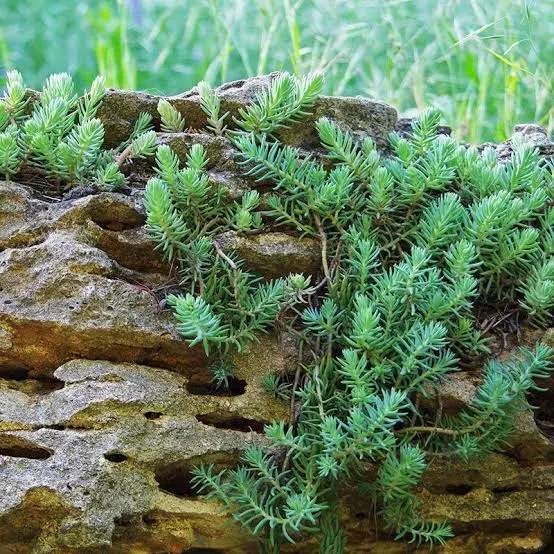
6. Yucca
| Common Name | Yucca, Adam’s needle, Spanish bayonet, yucca and needle palm. |
| Scientific Name | Yucca filamentosa, Manihot esculenta |
| Family | Asparagaceae |
| Temperature | 13- 27°C |
| Hardiness Zone | 4-11 |
| Origin | North America |
Yucca plants are stemless with sword-shaped rosette leaves that have bell-shaped waxy white flowers. Their unusual appearance is quite appealing to gardening enthusiasts. It can reproduce by basal and root cuttings but if one wants to obtain edible fruit from these succulents then it must be pollinated by Yucca Moth.
With more than fifty known species of Yucca plant, one species is protected by law in California i.e. Joshua tree (Yucca brevifolia) in Joshua Tree National Park covering a huge area of two big deserts(Colorado and Mojave) and six mountain ranges. With its waxy coatings, it survives in prolonged dry spells and water-deficient conditions. Its roots have been proven to be effective in many medicinal remedies.
Other well-known species of Yucca plants are:-
- Spanish bayonet (Yucca aloifolia)
- Spanish dagger (Yucca gloriosa)
- Adam’s needle (Yucca filamentosa)
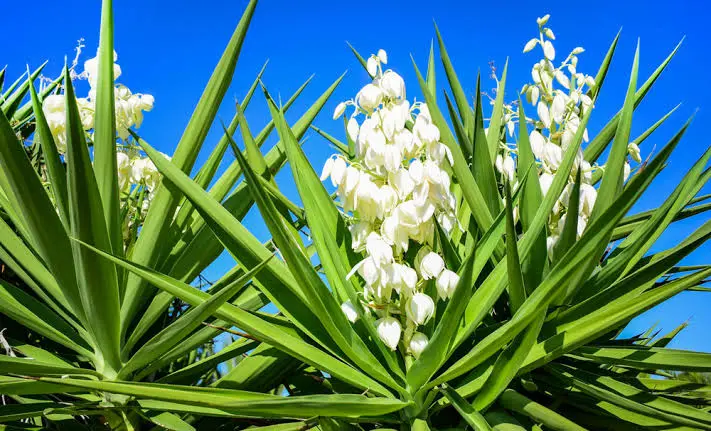
7. Rosularia
| Common Name | Turkish stonecrop |
| Scientific Name | Rosularia platyphylla |
| Family | Crassulaceae |
| Temperature | 60°F and 80°F and can tolerate 0°F |
| Hardiness Zone | 5-6 |
| Origin | Mountainous Terrains of Turkey |
Rosularia is a flat, broad leaf structure that forms a rosette-like appearance and grows in the presence of little and stony soil. It is one of the best succulents used in table pots or small pots, rock gardening, etc. It is a slow-growing plant with green to purplish leaves and only reaches up to a 6-7 inches height. In addition to that it is perennial, which means this succulent needs minimum maintenance cost. Its width increases as the rosette grows even more until offsets are produced.
On a long day, indirect sunlight is best for the health of Rosularia. It performs better in gravel soil than clayey soil and requires less irrigation, especially during the dormant periods i.e. in winter. Rosularia can survive in frost, yet prolonged exposure to extreme cold or snow may damage its roots and tissues and ultimately cause the death of the plant. It can be propagated through leaf cuttings but using offsets is a wiser choice.
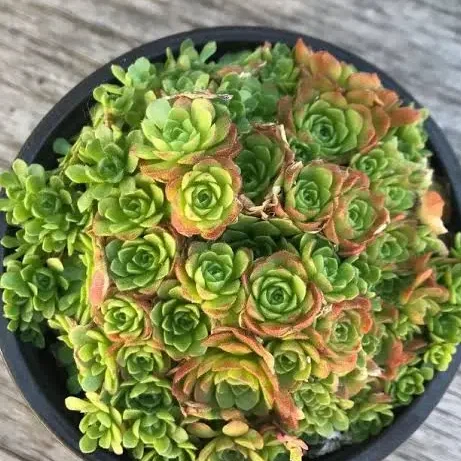
8. Common Houseleek
| Common Name | Common Houseleek, Hens and chicks |
| Scientific Name | Sempervivum tectorum |
| Family | Crassulaceae |
| Temperature | 0-35°C |
| Hardiness Zone | 3-11 |
| Origin | Native to southern Europe |
Sempervivum is grown all over the Europe. As the name suggests ‘ live forever’, this succulent can multiply at a very fast rate, all thanks to its rosette that it easily produces and spreads profusely over the whole region. It survives drought as well as winter but is tolerant to only light salinity. Even in winter, it will need full sunlight. Individual rosettes in the succulent wither after bloom and should be removed manually for good health.
It could be used as ground cover or in a rock garden. The owner of this succulent must take care of the drainage as it is quite sensitive to waterlogged conditions.

9. Pachyveria
| Common Name | Pachyveria |
| Scientific Name | Pachyveria pachytoides |
| Family | Crassulaceae |
| Temperature | 20-35°C |
| Hardiness Zone | 9-10 |
| Origin | Mexico |
Though Pachyveria thrives best under direct sunlight it is tolerant to salinity, drought conditions and dry conditions. It is one of those succulents that require minimum maintenance and can be grown throughout the year in open conditions. In spring its colour changes to ‘ orange’ making it a piece of beauty.
People who are busy and can’t take care of the plants should adopt this one. The only thing that the owner has to consider is proper irrigation, over- irrigation is strictly prohibited, even when the plant experiences dry spells.
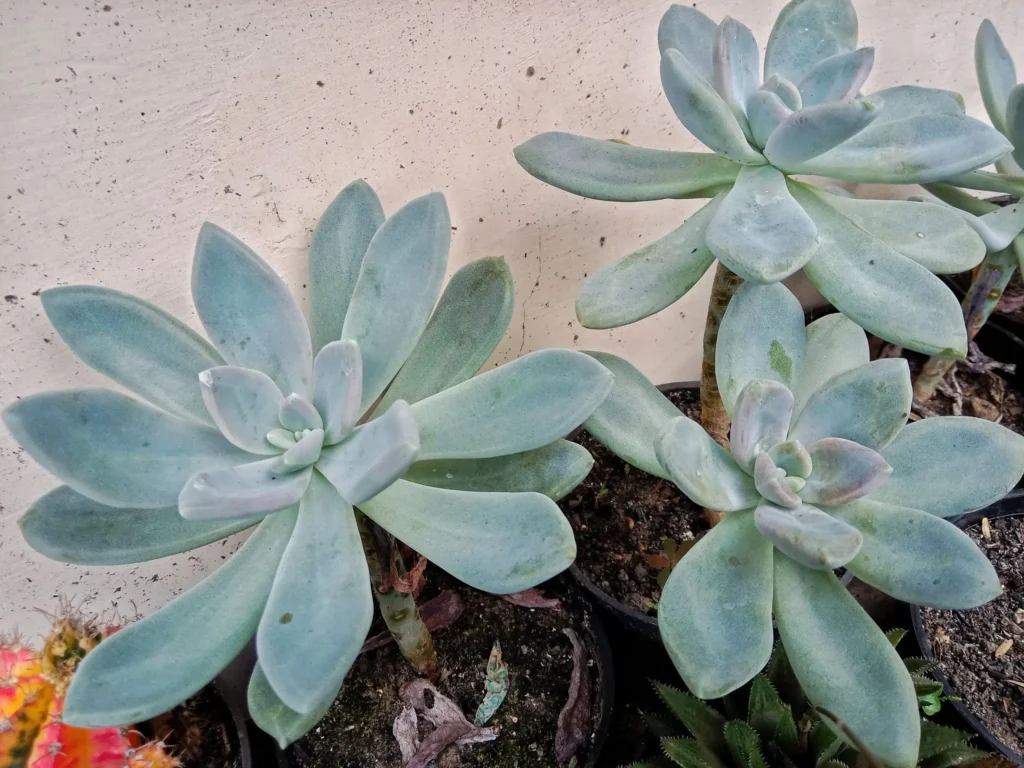
10. Firestorm
| Common Name | Sedum Golden Glow, Firestorm |
| Scientific Name | Sedum adolphii |
| Family | Crassulaceae |
| Temperature | 15-38°C, can tolerate up to 0°C |
| Hardiness Zone | 9-11 |
| Origin | Mexico |
Firestorm is low-growing and its rosette spreads all around. It is well-known for its red marginal succulent leaves that get brighter when exposed to more sunlight and lighter in cool temperatures and shady conditions. During spring, it produces small, star-shaped, white flowers. At this time, a unique colour contrast can be observed in the plant itself.
It is one of the plants that can tolerate extreme cold, but it could be sensitive to waterlogging. The soil is constituted with proper mixture and drainage facilities. Firestorm is an excellent succulent for ground cover and potting purposes.
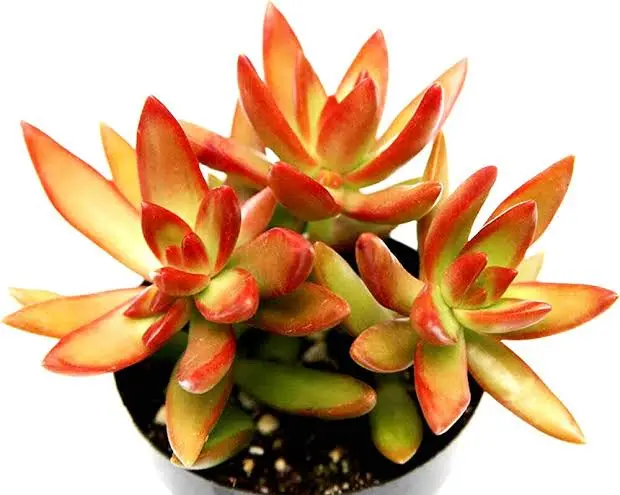
11. Blue Lotus
| Common Name | Blue Elf, Blue Lotus |
| Scientific Name | Sedeveria markus |
| Family | Crassulaceae |
| Temperature | 20-38°C |
| Hardiness Zone | 3-10 |
| Origin | Central America |
Sedeveria is obtained from the cross between Echeveria and Sedum and hence is similar to both. It is available in silver green, blue-green, and apple green colours. Some of these may have a yellowish or pinkish tint such as Sedeveria or Sorrento.
It is famous for its smooth and soft green colour, less maintenance needs and adaptability to many regions. It may bear small star-like yellow flowers in spring. It is perfect for indoor growing conditions.

12. Frank Reneilt
| Common Name | Frank Reneilt |
| Scientific Name | Echeveria agavoides |
| Family | Crassulaceae |
| Temperature | 18-27°C, tolerate up to 10°C |
| Hardiness Zone | 10 |
| Origin | Native to Mexico, the states of San Luis Potosí, Hidalgo, Guanajuato and Durango. |
An interesting phenomenon occurs in Echeveria, its colour changes to red in cold-stress conditions and then again turns to its natural green self. It is non-hardy and widely used in small pots and will require frequent irrigation, unlike other succulents. It prefers long hours of indirect sunlight.
Frank Renilt is obtained from the cross of Echeveria agavoides and Echeveria colorata. As it was obtained by Renilit, it was named after him. Not all Echeveria species have good cold- tolerance. Frank Renilit is exceptional among Echeveria which is unique with its tolerance capability and colour variations.

13. Aeoniums
| Common Name | Tree Houseleek |
| Scientific Name | Aeonium arboreum |
| Family | Crassulaceae |
| Temperature | 20-48°C, tolerate up to 5°C |
| Hardiness Zone | 9-11 |
| Origin | North Africa near the Canary Islands |
Aenomius should always be included in the list of winter succulents. It can tolerate extreme dry summers and wet winters, unlike many succulents rotting is not prominent in Aenomius. In contrast to other succulents, Aenomius appears much of a beauty in winter rather than in summer.
It appears like dry sticks in Summer as it is the dormancy period of this succulent and it loves watering during winters. Some of the cultivars of Aenomius are sensitive to salinity, so careful selection of succulents is necessary. There are more than sixty species known of this succulent.
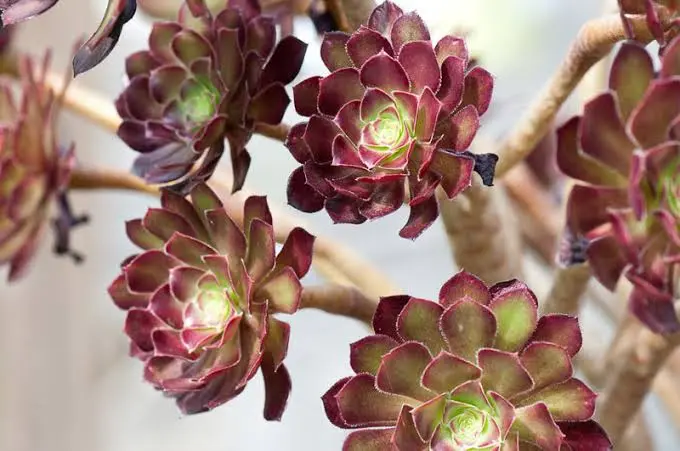
14. Haworthia
| Common Name | Pearl Plant, Star Window Plant, Zebra Cactus |
| Scientific Name | Haworthia |
| Family | Asphodelaceae |
| Temperature | 5 -35 ℃ |
| Hardiness Zone | 9-11 |
| Origin | South Africa |
Haworthia may survive best in summer as well as in winter but it is very sensitive to root rotting caused by water lodging, though it can be propagated by the offsets that are frequently produced by the succulent. It completely dies once the roots are damaged. It has thick leaves and no stem and is often confused with Aloe. The white strip or dot pattern with spines on the fleshy leaves gives a unique geometry and hence, it is popular with the name ‘Zebra Cactus’. It requires indirect or partial shady conditions for its growth.
Flowering is rare in this succulent but the emergence of small white flowers in this plant feels rewarding. There are about sixty species of Hawortia and about 150 varieties and all appear in rosette shape except for the fan-shape like Haworthia truncata.
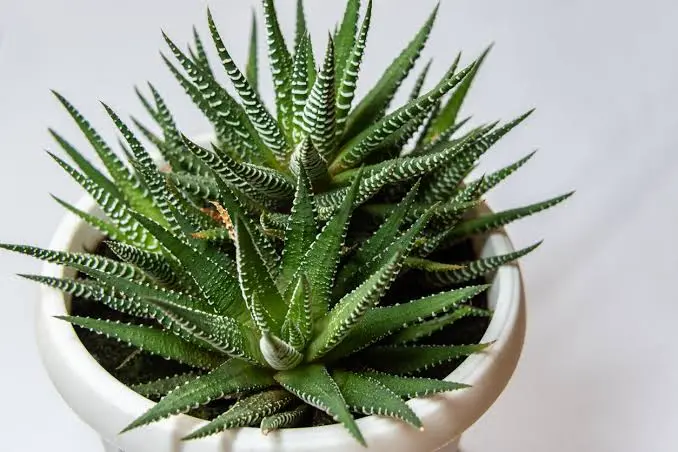
15. Delosperma
| Common Name | Ice Plant |
| Scientific Name | Delosperma sp. |
| Family | Aizoaceae |
| Temperature | 18-27°C |
| Hardiness Zone | 6-10 |
| Origin | South Africa |
Delosperma is one of the best succulents that could be used in Rock Garden, because of its daisy-like hues. It has pink, orange, yellow, purple and sometimes a mix of such flowers. The mesmerising beauty of this succulent attracts pollinators in the garden as well. It can survive cold temperatures, but flowers only in spring when enough sunlight is provided to the succulent.
There are more than 170 species of Delosperma available around the world, among which Delosperma floribundum is most popular for its flowers. It can also be used in hanging baskets as well as for ground cover.
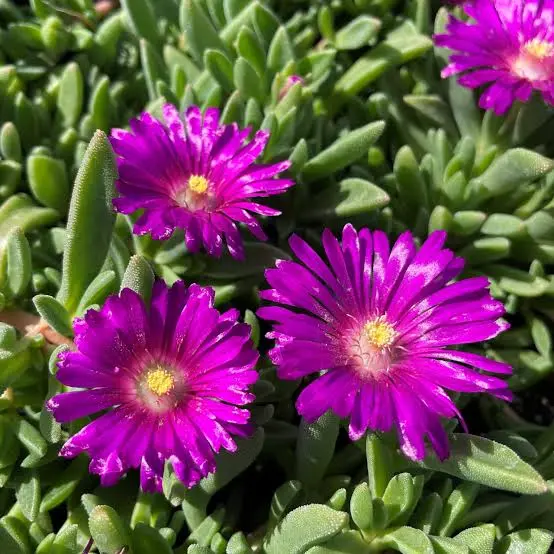
16. Cobweb
| Common Name | Cobweb House-leek |
| Scientific Name | Sempervivum arachnoideum |
| Family | Crassulaceae |
| Temperature | Tolerate up to -14°C |
| Hardiness Zone | 6-8 |
| Origin | Native to the Alps of Europe |
Cobweb has a spider-web-like appearance over the whole plant, it is made up of natural white hairs produced by the plant itself, for protection against direct or excessive sunlight, it also traps moisture that could be utilised in plant growth. This plant can survive extreme cold and hot climates. The leaves are green to reddish, depending upon the type of variety and sunlight it receives. It may bloom star-shaped flowers in spring with a long stalk that originates from the centre. The chicks(offsets) are developed in later staves that could be used for further propagation.
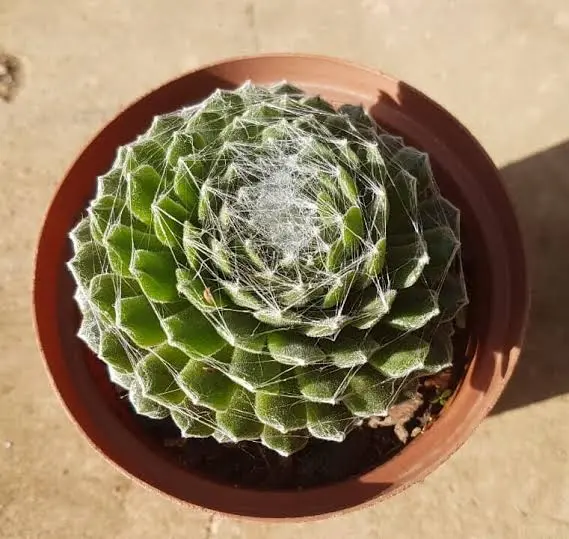
17. Oscularia
| Common Name | Dassievygie, Sandsteenvygie, Pink Ice Plant |
| Scientific Name | Oscularia deltoides |
| Family | Desmetiana |
| Temperature | 15-35°C |
| Hardiness Zone | 6-11 |
| Origin | South-West Cape, South Africa |
Oscularia is one of its kind, it has three-angled leaves that are pointed red at the ends and provides beautiful scented pink flowers in spring. It is robust and perennial. It may not survive long winter days but it can tolerate slight frosty conditions. Popularly known as the Pink Ice plant, it could be used as ground cover in Rock gardens and naturally, it is found in rocky habitats.
More than twenty-three genus names of Oscularia have been discovered so far. Many of these are favourable in sandstone but some are also found near granite. Even though it is easy to grow this plant, intercultural operations are important during its growth as this plant is sensitive to competition in the growing area, that’s why they are found alone in nature where other plants are not thriving.
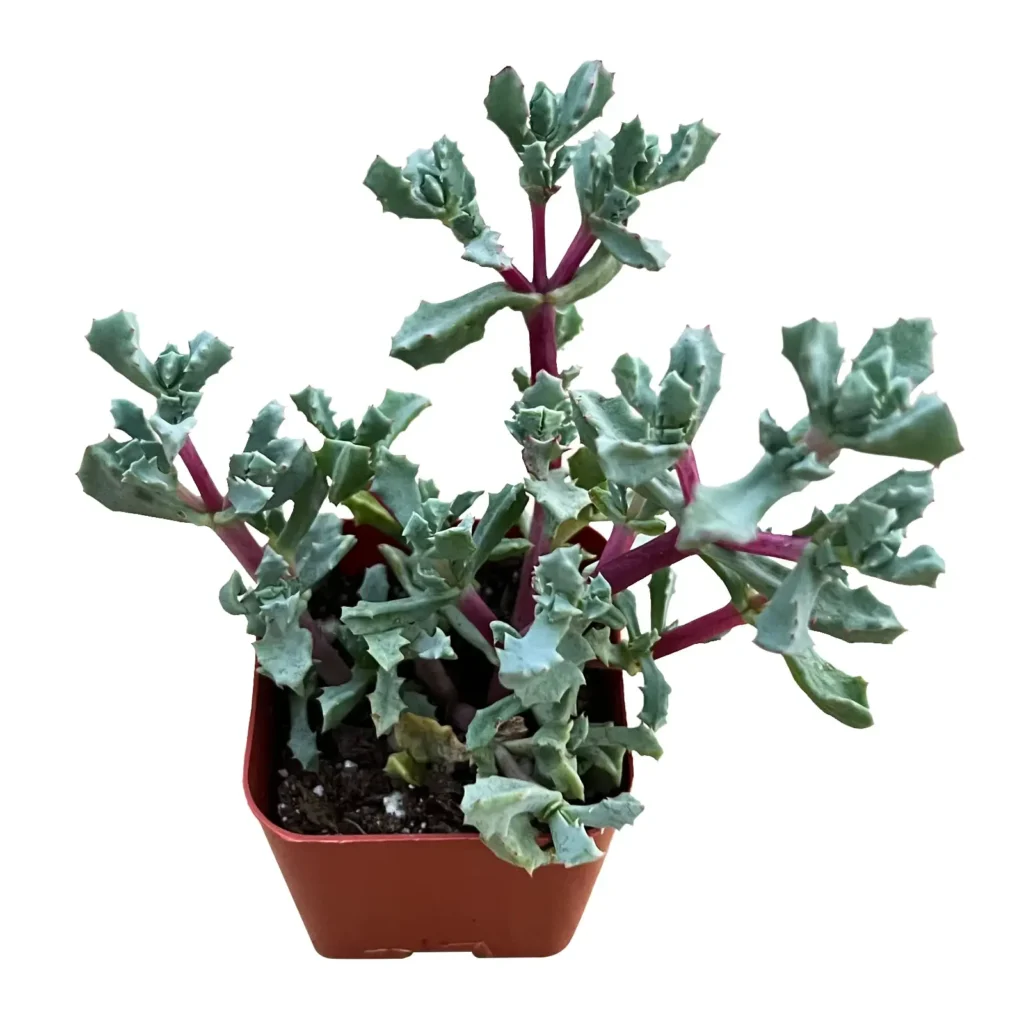
18. Desmetiana
| Common Name | Desmetiana |
| Scientific Name | Echeveria peacockii |
| Family | Crassulaceae |
| Temperature | 15-30°C, tolerate up to 6°C |
| Hardiness Zone | 8-10 |
| Origin | Mexico |
Desmentiana is found in high altitudes, it can’t tolerate consistent direct sunlight and is extremely sensitive to waterlogged conditions. It is one of the ideal succulents known for its rosette appearance, greyish fleshy leaves with pointed ends and a thin whitish translucent membrane that can be observed over the surface of the whole plant.
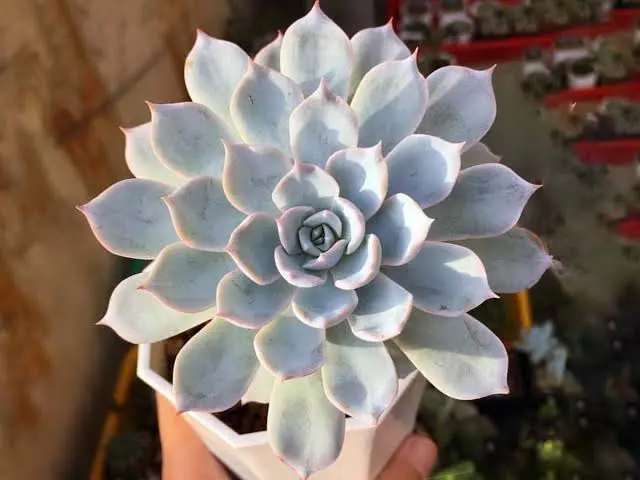
19. Coral Beads
| Common Name | Coral Beads |
| Scientific Name | Sedum stahlii |
| Family | Crassulaceae |
| Temperature | 13-18°C |
| Hardiness Zone | 3-8 |
| Origin | Oaxaca, Puebla, and Veracruz(Mexico) |
Coral Beads reach a height of up to 1.5 cm, the stems are densely covered with shiny, spherical fleshy leaves. The intriguing colours of these bead-like leaves range from dark green, and rusty brown to deep brown, the colour may also vary with changing seasons all-round the year. It may also bear star-shaped yellow flowers in spring, which increases the aesthetic value of this magnificent succulent.
The beads attached to the stem are extremely sensitive, they can detach even from a slight touch or movement of the plant, hence, it should be placed as such the pot will not have to face much movement. One more fascinating characteristic of Bead Coral is that it can thrive well in a lot of climatic zones and weather, from full sunlight to partial shade, from extreme summer to cold winters, the only change in plant appearance is its colour.
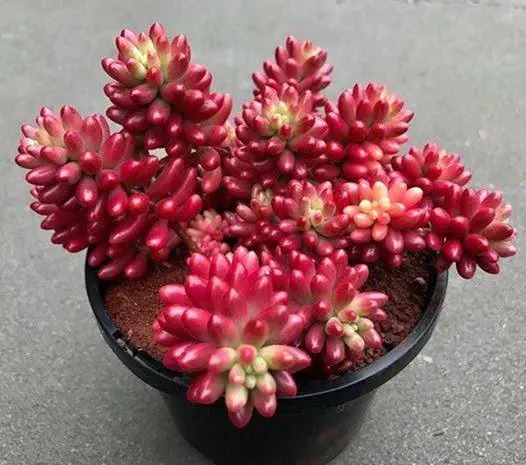
20. Campfire
| Common Name | Campfire |
| Scientific Name | Crassula capitella |
| Family | Crassulaceae |
| Temperature | 15-35°C, tolerate upto -1.1°C |
| Hardiness Zone | 9-10 |
| Origin | Southern Deserts of Africa |
Campfire should be the queen of winter succulents, it not only tolerates winter but appears most beautiful in low temperatures. Usually, the plant has propeller-like, fleshy leaves that appear full green in summer and shade but respond to the sunlight it receives. Cool nights and bright days during winter turn plant leaves from fresh red to green, enhancing the beauty of the surroundings, wherever it is kept.
Unlike other succulents, Campfire has unique watering needs, so a complete ‘soak and dry’ method is recommended. Other than the watering habits, it is one of the fastest growing succulents, it can reach up to a height of 61 cm and 13 cm width.
Hence it could be used for fast ground-covering and must be maintained timely. It could be propagated by cuttings and Offsets. Although it is a beauty, the sap of this succulent is toxic to humans and pets. So keep this garden beauty away from the reach of your children and pets.
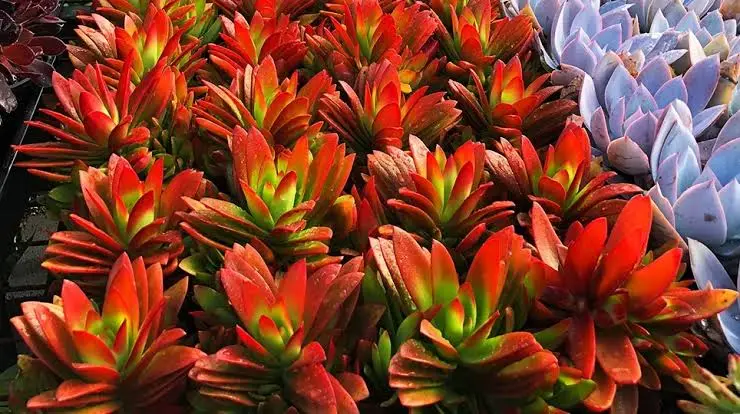
Conclusion
The first thing that strikes in mind after hearing Succulents is their favorability to summer and high temperatures. Despite all the odds, enthusiasts and researchers have found and developed so many species and varieties of succulents to bring their aesthetics to every household in every region. If you belong to a place that receives a lot many winter days and want to own succulents, then this article is for you and to let your enthusiasm take over against all odds. To fulfil this goal, In this article, we came to learn about fifteen Succulents that can survive winter and flow greenery to your homes even in small spaces.
“The eyes are the window to your soul“
-William Shakespeare
Whatever our eyes see has a direct impact on our souls, these little succulents not only decorate our place but also manifest calmness and a refreshing sensation within us. In between our busy lifestyles, succulents are the little connectors to the ethereal nature. There is so much to learn from the succulent itself, the adaptability mechanism, utilisation of resources, fighting against odds, etc. Adopting succulents can be a part of therapy for adults and a learning for children while being economical and a naturalist at the same time.
Also Read:

